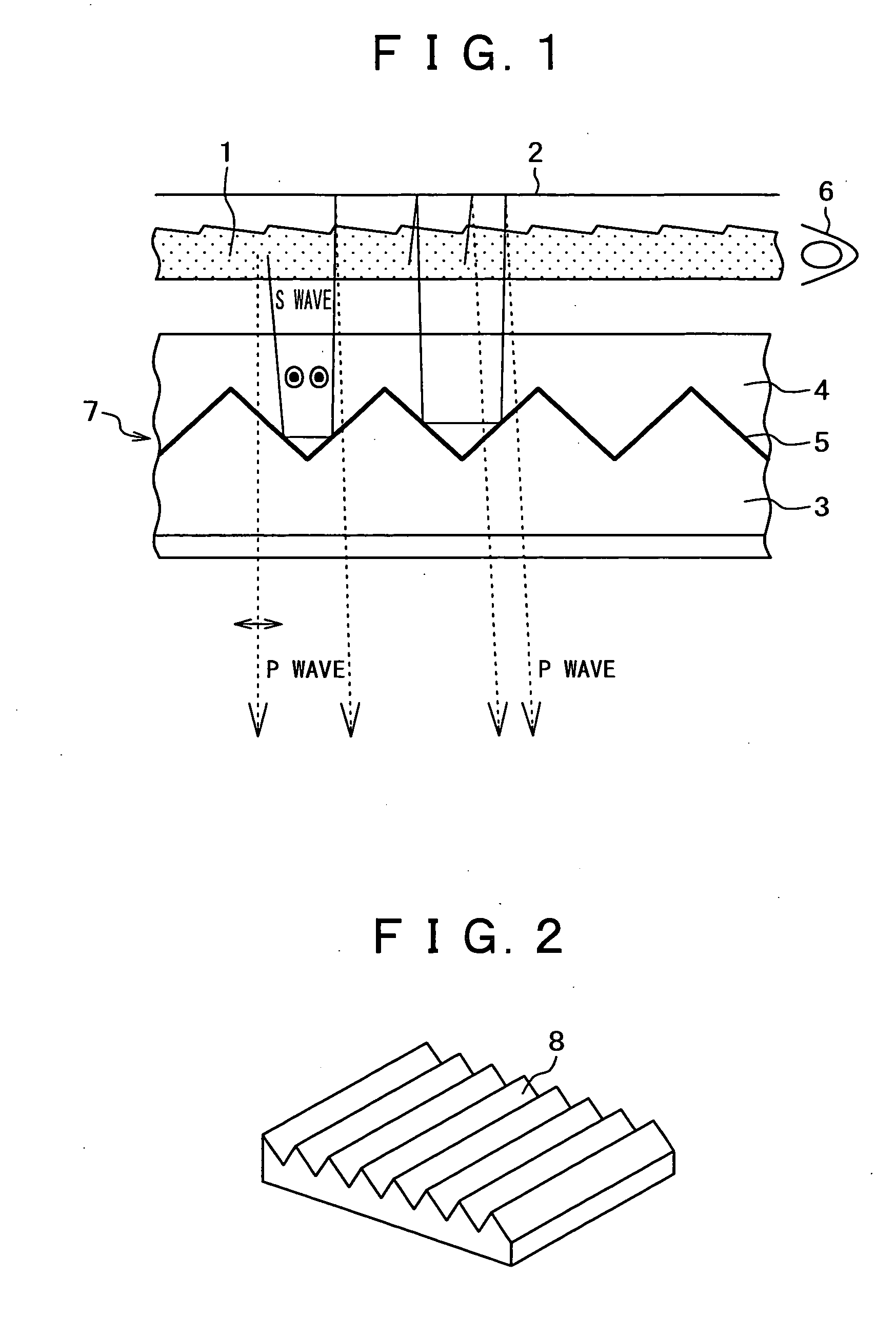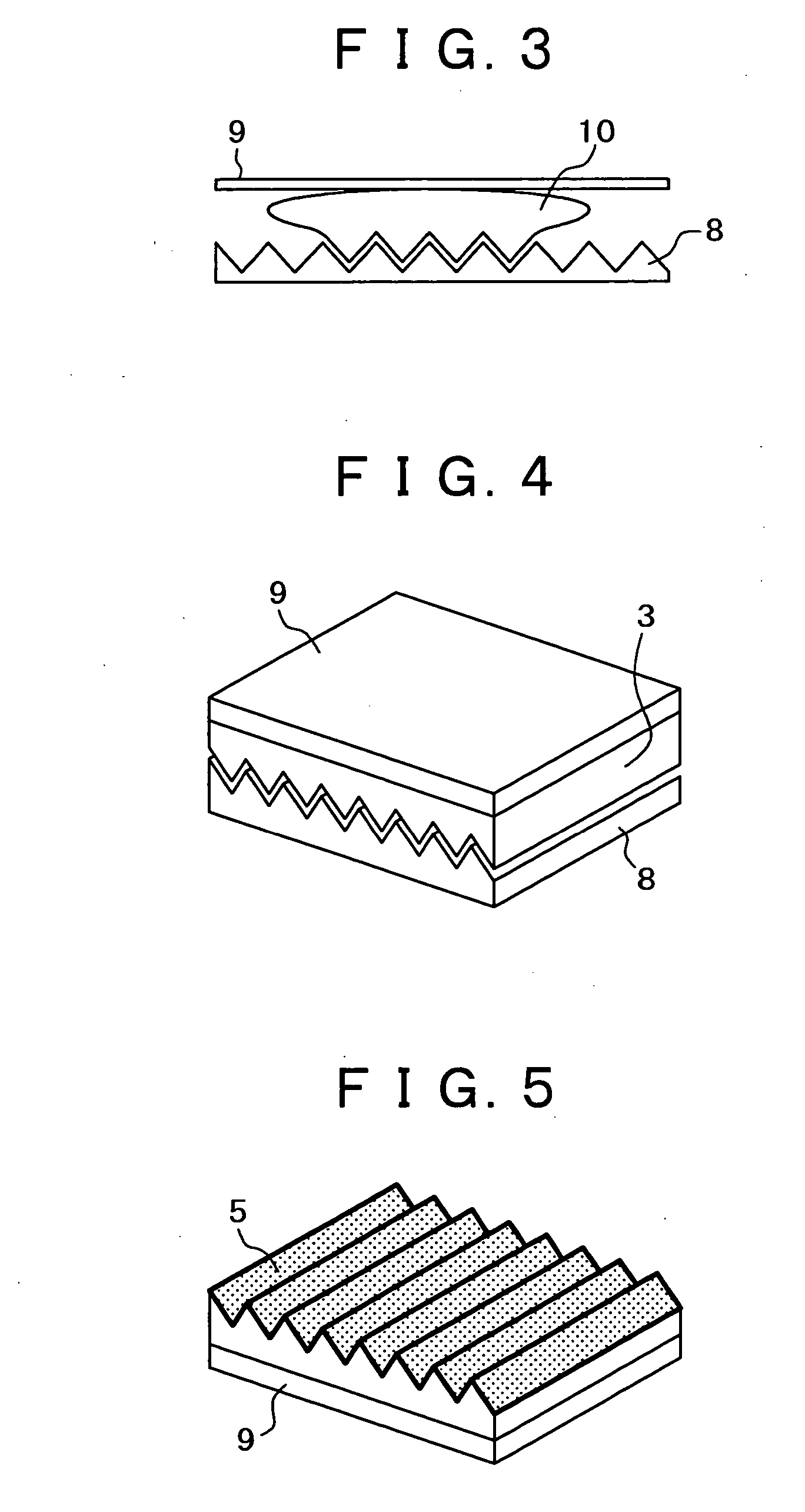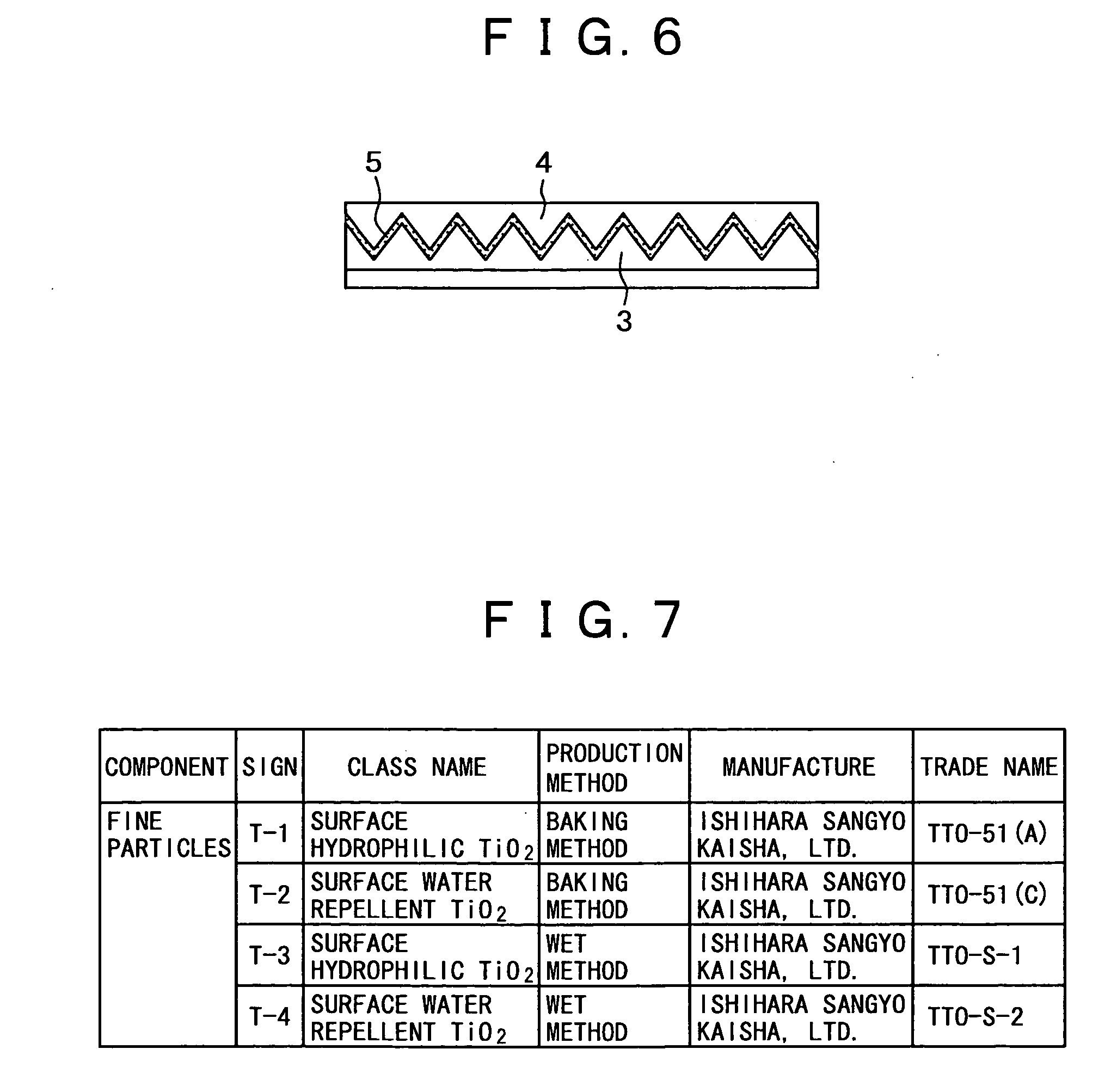Fine particle dispersion composition, optical component, optical film laminate, polarization splitting device, and method for manufacturing the optical component
a technology of polarization splitting and composition, applied in the direction of polarising elements, instruments, electrochemical generators, etc., can solve the problems of affecting the yield and reliability of the product, the cured state of a deep lower portion is largely different, and the thickness of the thick film is hundreds nm or more, so as to improve the yield and reliability, improve the affinity or adhesion between the layers of the laminate, and improve the environmental durability
- Summary
- Abstract
- Description
- Claims
- Application Information
AI Technical Summary
Benefits of technology
Problems solved by technology
Method used
Image
Examples
examples
[0136] Practical examples of practicing the invention are described hereinbelow. This example is illustrative. The invention is not limited to this example.
[0137]FIG. 7 to FIG. 9 show specifications of fine particles, organic resin materials, and surfactants used in the examples. Components in each of the examples are designated by signs.
[0138] Four kinds of TiO2 fine particles, that is, surface hydrophobic and surface repellent TiO2 ones manufactured by a baking method, and hydrophobic and surface repellent TiO2 ones manufactured by a wet method were used as the fine particles (FIG. 7).
[0139] Various kinds of cured resin materials, that is, alicyclic epoxy resin, oxetane resin, and acrylic resin were appropriately used as the organic resin materials (FIG. 8).
[0140] Anionic, nonionic, cationic surfactants and various combinations thereof were used (FIG. 9).
[0141] Methyl ethyl ketone (MEK) was used as the organic solvent. However, similar results were obtained even when methyl i...
first example
[0142] Components of the fine particle dispersion composition according to first example of the invention and a manufacturing method therefore are described hereinbelow
[0143] (1) Components of Fine Particle Dispersion Composition
Fine Particles: T-1 9 wt %Organic Resin Materials: R-1 2 wt % R-6 2 wt %Surfactant: A-7 2 wt %Organic Solvent: MEK85 wt %
(2) Method of Manufacturing Fine Particle Dispersion Composition
[0144] The above-mentioned components were weighed at the above-mentioned ratios. Then, the components were mixed together with ceramic balls (0.1 mm in diameter), which was made mainly of ZrO2 and had an amount corresponding to 200% the total amount of the above-mentioned components. Thereafter, these were inputted into a polyethylene bottle container, which was then put into a mixing shaker. Thereafter, dispersion and mixing were performed until the dispersion was sufficiently achieved. Incidentally, it took 20 hours until the dispersion was sufficiently achieved.
(3) ...
second example
[0149] Dispersion and mixing were performed on the fine particle dispersion composition according to the invention or a part thereof by changing the component and performing a process similar to that performed in the case of the first example. Thus, dispersion tests were performed on the fine particles. FIG. 10 shows specifications of the tests respectively designated as “Dispersion Nos. 1 to 20”. Incidentally, the specification of the test “Dispersion No. 1” is that of the test performed on the first example. Then, dispersion and mixing were performed on fine particle dispersion compositions, which were other than that used in the case of the example and employed as comparative examples, by performing a process similar to the process performed in the case of the first example. Thus, dispersion tests on fine particles thereof were conducted. FIG. 11 shows the specifications of such tests respectively designated as “Dispersion Nos. 21 to 32”.
[0150] Also, the dispersibility of fine p...
PUM
| Property | Measurement | Unit |
|---|---|---|
| Dispersion potential | aaaaa | aaaaa |
| Weight ratio | aaaaa | aaaaa |
| Molecular weight | aaaaa | aaaaa |
Abstract
Description
Claims
Application Information
 Login to View More
Login to View More - R&D
- Intellectual Property
- Life Sciences
- Materials
- Tech Scout
- Unparalleled Data Quality
- Higher Quality Content
- 60% Fewer Hallucinations
Browse by: Latest US Patents, China's latest patents, Technical Efficacy Thesaurus, Application Domain, Technology Topic, Popular Technical Reports.
© 2025 PatSnap. All rights reserved.Legal|Privacy policy|Modern Slavery Act Transparency Statement|Sitemap|About US| Contact US: help@patsnap.com



